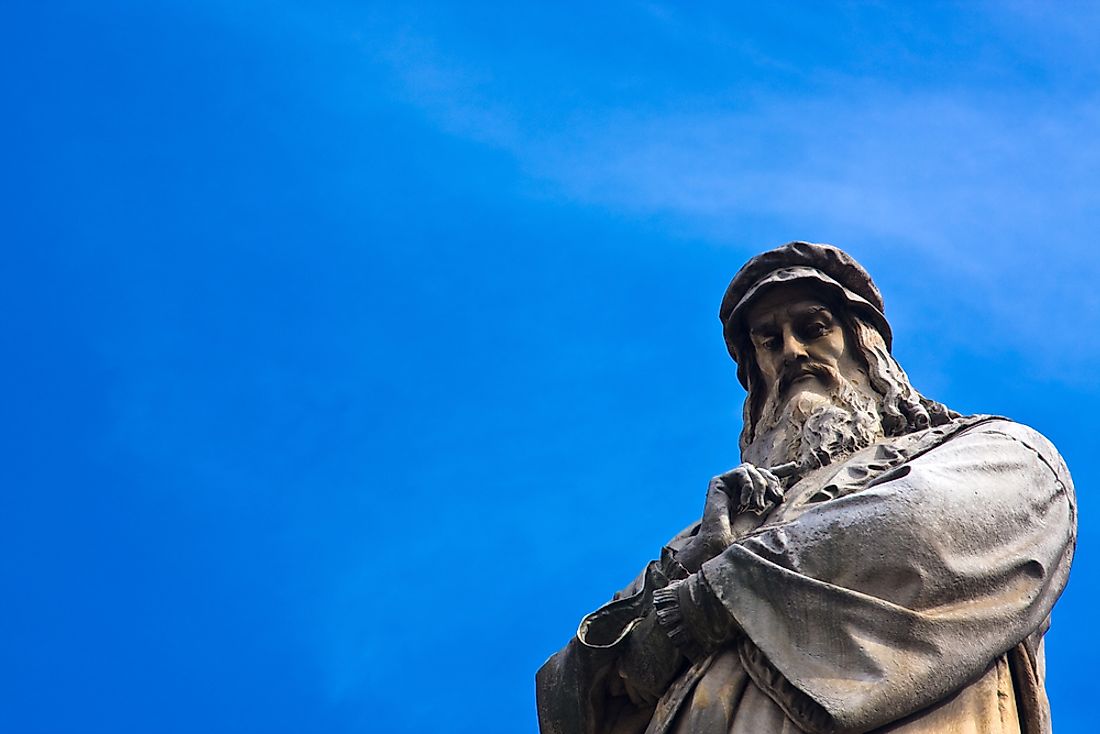What Was Leonardo's World Map?

What was Leonardo’s World Map?
The Leonardo World Map is an ancient octant projection map which has the earliest use of the word “America.” The map accurately shows the information given by sailor Amerigo Vespucci which he brought after his extensive expeditions around the world between 1503 and 1505. The map shows the earth divided into eight equilateral triangles with each section being joined by the Equator. The eight triangles resemble two four-leaf clovers placed side by side with the poles in the middle of each clove. The map was discovered among several documents belonging to Leonardo da Vinci which were stored in Windsor.
Leonardo da Vinci
Leonardo da Vinci was an Italian artist who is world famous for his many works of art as well as being seen as a key figure in the Renaissance movement of the 16th century. Leonardo da Vinci was an acclaimed architect, painter, engineer, scientist, mathematician, sculptor among others. Some of his most famous works include critically acclaimed paintings of the Mona Lisa, The Last Supper, The Vitruvian Man as well as several manuscripts such as the Codex Windsor, Codex Arundel, and the Codex Urbinas among others. Leonardo da Vinci was also famous for his mapping and cartography skills and is said to have had the ability to use his memory to draw a map complete with contours after taking a walk. His map-making skills were so impressive that an influential politician named Cesare Borgia once hired him on the spot after he presented him an accurate map of his stronghold.
Depictions on the Map
The Leonardo World Map depicted high accuracy which was not replicated for the next three centuries. For instance, the map showed Antarctica as a continent while showing the Arctic as an ocean. The map’s accuracy of the Arctic is an amazing feat considering the technology of the time as well as the continuous cover of ice in the Arctic which was more profound in past centuries. The map also has depicted India, China, Malaysia, Japan as well as the Russian Peninsula rather accurately and with right proportions. However, the map greatly exaggerates the size of Europe. Despite a few discrepancies, Leonardo’s octant map was a source of inspiration for many map makers in future generations including French cartographer, Oronce Fine (1494-1555) and more recently during the 1915 Pan-Pacific Exposition by Bernard J. Cahill who drew an octant map for the flight-around-the-world challenge.
Controversy of the Map
While the Leonardo World Map was found among Leonardo’s documents, many scholars discredit his hand in the drawing of the map due to the absence of Leonardo’s high standards on the map with scholars claiming that the world map was the work of one of his close students. However, other scholars claim that the world map is an authentic artistic work of Leonardo da Vinci including Grothe in his 1934 Spanish publication, “Enciclopedia universal ilustrada Europeo-Americana” and more recently by Christopher Tyler in his 2014 paper, “Leonardo da Vinci’s World Map.” These scholars base their argument to Leonardo’s notes in the Codex Atlanticus where Leonardo da Vinci indicates, “my world map that is with Giovanni Benci.” Giovanni Benci was a close friend to Da Vinci, and they exchanged books.











